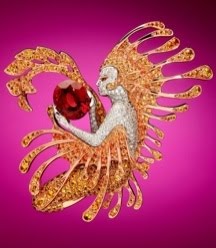


 Certain fashion personalities are so strong that anything caught and held in their gaze is cast in a different light: a vintage silhouette informs a new collection, '30s movie stills inspire advertising campaigns, and gangly teenagers morph into supermodel goddesses. Chanel's Karl Lagerfeld--the king of couture--is one such figure. Hedi Slimane, former menswear designer at Christian Dior, is another.
Certain fashion personalities are so strong that anything caught and held in their gaze is cast in a different light: a vintage silhouette informs a new collection, '30s movie stills inspire advertising campaigns, and gangly teenagers morph into supermodel goddesses. Chanel's Karl Lagerfeld--the king of couture--is one such figure. Hedi Slimane, former menswear designer at Christian Dior, is another.Now a photographer with an almost febrile instinct for tracking glamour to its lair, Slimane recently turned his camera (and his x-ray eyes) on France's elite St. Cyr military academy. Napoléon founded the school in 1803 and, being something of a dandy himself, helped design its original uniforms; two centuries later, many of the little emperor's influences are still evident. Slimane knew this--his photographs, which ran in last weekend's magazine section of Libération, were shot, ostensibly, as a fashion portfolio--but he didn't stop there. He managed to pierce St. Cyr's official facade (still evident on faces of a few wary cadets) and catch the barely-contained energy of rambunctious 20-somethings learning to harness their emotions through discipline. The result is both a brilliant study of power and style, and a sensitive ethnographic record of a rarely-glimpsed tribe and its customs.
www.hedislimane.com




















.jpg)

.jpg)

.jpg)


.jpg)




.jpg)







